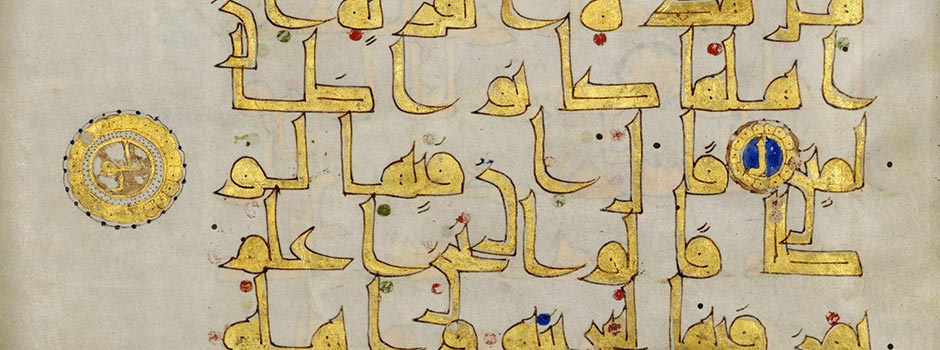
Aga Khan Museum in Toronto Museum to Showcase the Cultural Contributions of Muslim Civilisations to World Heritage
Sep 03, 2014 Art Collection

The Museum’s Permanent Collection of over 1,000 objects includes masterpieces that reflect a broad range of artistic styles and materials. These portraits, textiles, miniatures, manuscripts, ceramics, tiles, medical texts, books and musical instruments represent more than ten centuries of human history and a geographic area stretching from the Iberian Peninsula to China.
Designed by architect Fumihiko Maki, the Museum shares a 6.8-hectare (17-acre) site with Toronto’s Ismaili Centre, which was designed by architect Charles Correa. The surrounding landscaped park, designed by landscape architect Vladimir Djurovic, will provide an exciting new green space for the city of Toronto.
-Aerial-Photo.jpg) Toronto’s Ismaili Centre & Aga Khan Museum / Photo by Tom Arban / Courtesy of Aga Khan Museum
Toronto’s Ismaili Centre & Aga Khan Museum / Photo by Tom Arban / Courtesy of Aga Khan Museum
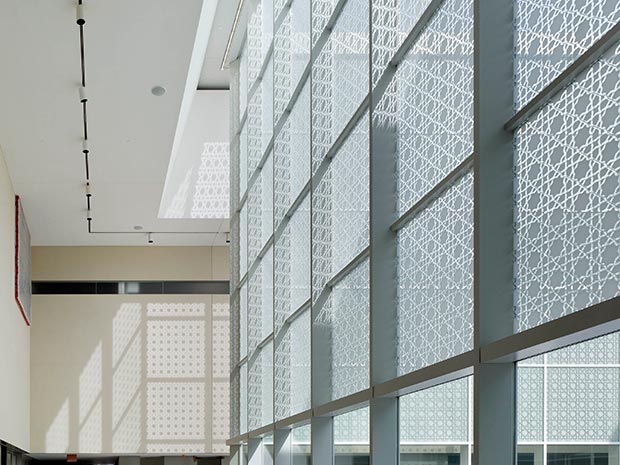 Aga Khan Museum / Photo by Tom Arban, Courtesy of Aga Khan Museum
Aga Khan Museum / Photo by Tom Arban, Courtesy of Aga Khan Museum
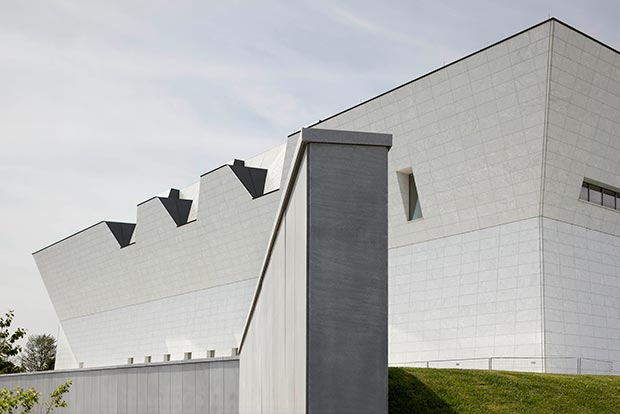 Aga Khan Museum / Photo by Tom Arban, Courtesy of Aga Khan Museum
Aga Khan Museum / Photo by Tom Arban, Courtesy of Aga Khan Museum
"One of the lessons we have learned in recent years is that the world of Islam and the Western world need to work together much more effectively at building mutual understanding – especially as these cultures interact and intermingle more actively," commented His Highness Aga Khan. "We hope that this museum will contribute to a better understanding of the peoples of Islam in all of their religious, ethnic, linguistic and social diversity."
From their earliest origins, Muslim civilisations have been characterised by a remarkable diversity of geographies, languages, and cultures. Toronto –and Canada more generally– is internationally recognised for embracing such diversity. The city therefore provides an ideal home for an institution that strives to promote mutual understanding, respect and tolerance among the world’s cultures.
"The Aga Khan Museum has an international outlook," observes Henry Kim, Director of the Museum. "Home to a collection of astonishingly beautiful works of art, it will showcase the artistic creativity and achievements of Muslim civilisations from Spain to China. I think local and international visitors will be greatly surprised when they discover just how much the arts of Muslim civilisations are a part of our shared global cultural heritage."
Since 2007, over 1 million people have experienced the splendour of the Aga Khan Museum Collection. The Musée du Louvre in Paris, the State Hermitage Museum in St. Petersburg, the Gulbenkian Museum in Lisbon, the Martin-Gropius-Bau in Berlin, the Sakıp Sabancı Museum in Istanbul, the Islamic Arts Museum Malaysia in Kuala Lumpur and the Asian Civilisations Museum in Singapore have all hosted temporary exhibitions of major works of art from the Aga Khan Museum Collection.
 Dish, Iznik, Turkey, 1570–80, Fritware, underglaze-painted, Diameter 34.3 cm, height 7.4 cm, AKM687 / Courtesy of Aga Khan Museum
Dish, Iznik, Turkey, 1570–80, Fritware, underglaze-painted, Diameter 34.3 cm, height 7.4 cm, AKM687 / Courtesy of Aga Khan Museum
 Ablution Basin, Jingdezhen, China, 1506–21, Porcelain, Diameter 41.8 cm, height 7.5 cm, AKM722 / Courtesy of Aga Khan Museum
Ablution Basin, Jingdezhen, China, 1506–21, Porcelain, Diameter 41.8 cm, height 7.5 cm, AKM722 / Courtesy of Aga Khan Museum
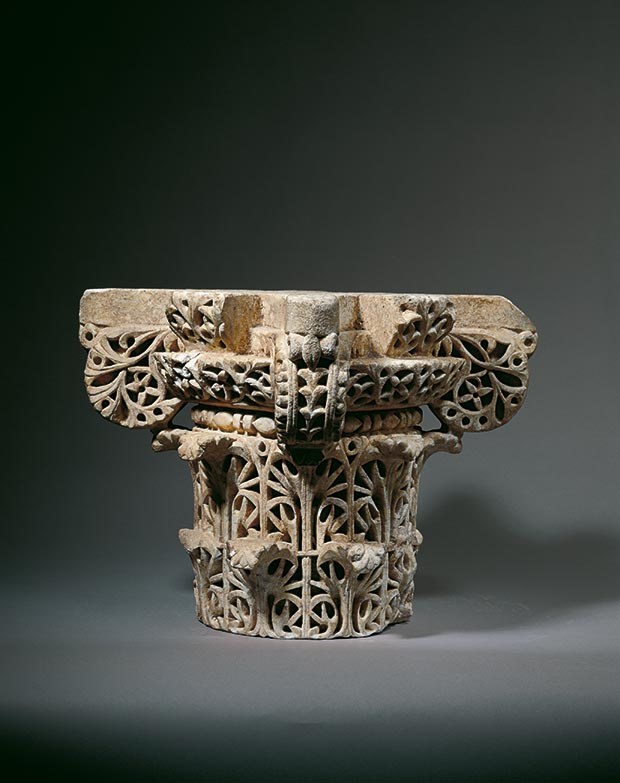 Capital, Spain (Historic al-Andalus), 10th century, Carved marble, Height 28 cm, AKM663 / Courtesy of Aga Khan Museum
Capital, Spain (Historic al-Andalus), 10th century, Carved marble, Height 28 cm, AKM663 / Courtesy of Aga Khan Museum
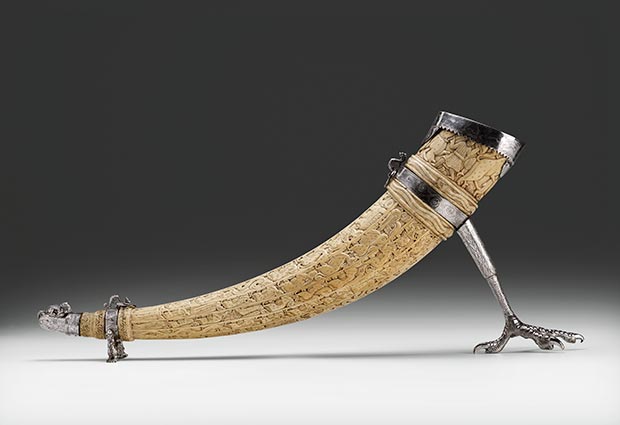 Ivory Horn (Oliphant), Southern Italy, 11th–12th centuries (mount: United, Kingdom, early 17th century), Carved ivory with silver mount, Length 64 cm, height 34 cm, AKM809 / Courtesy of Aga Khan Museum
Ivory Horn (Oliphant), Southern Italy, 11th–12th centuries (mount: United, Kingdom, early 17th century), Carved ivory with silver mount, Length 64 cm, height 34 cm, AKM809 / Courtesy of Aga Khan Museum
,-14th-century_Aga-Khan-Museum-Toronto.jpg) Planispheric Astrolabe, Spain (Historic al-Andalus), 14th century, Bronze inlaid with silver, Diameter 13.5 cm (5¼ in.), AKM611 / Courtesy of Aga Khan Museum
Planispheric Astrolabe, Spain (Historic al-Andalus), 14th century, Bronze inlaid with silver, Diameter 13.5 cm (5¼ in.), AKM611 / Courtesy of Aga Khan Museum
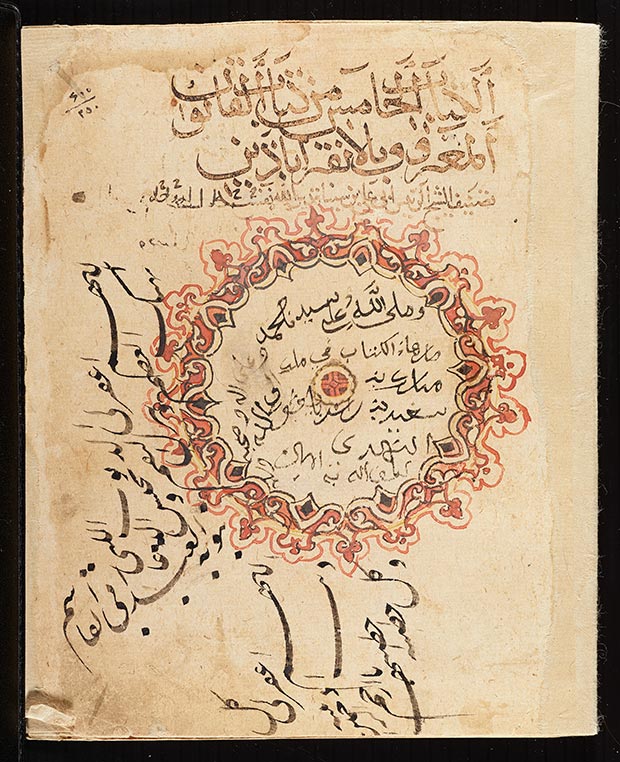 Qanun [Fi’l-Tibb] (Canon [of Medicine]), Volume 5, Ibn Sina (d. 1037), Iran or Iraq, 1052, Opaque watercolour and ink on paper, Folio: 21.2 x 16.4 cm (8⅜ x 6½ in.), AKM510 / Courtesy of Aga Khan Museum
Qanun [Fi’l-Tibb] (Canon [of Medicine]), Volume 5, Ibn Sina (d. 1037), Iran or Iraq, 1052, Opaque watercolour and ink on paper, Folio: 21.2 x 16.4 cm (8⅜ x 6½ in.), AKM510 / Courtesy of Aga Khan Museum
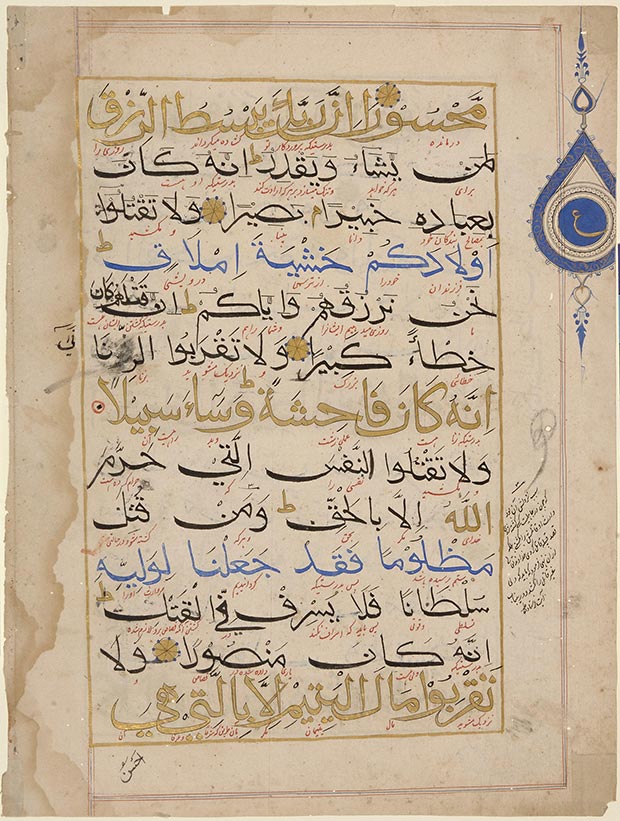 Qur'an folio, Gold, ink, paper, Delhi, India, about 1400, 36.9 x 28 cm, AKM242 / Courtesy of Aga Khan Museum
Qur'an folio, Gold, ink, paper, Delhi, India, about 1400, 36.9 x 28 cm, AKM242 / Courtesy of Aga Khan Museum
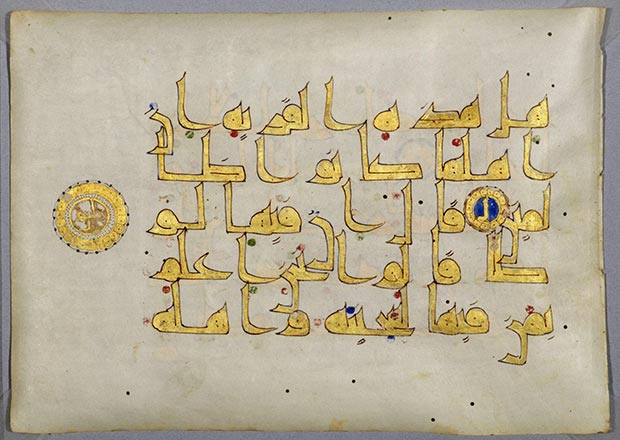 Qur'an leaf, Opaque watercolour, gold, ink, vellum, 14.9 x 20.9 cm, Near East or Iran, 900s, AKM480 / Courtesy of Aga Khan Museum
Qur'an leaf, Opaque watercolour, gold, ink, vellum, 14.9 x 20.9 cm, Near East or Iran, 900s, AKM480 / Courtesy of Aga Khan Museum
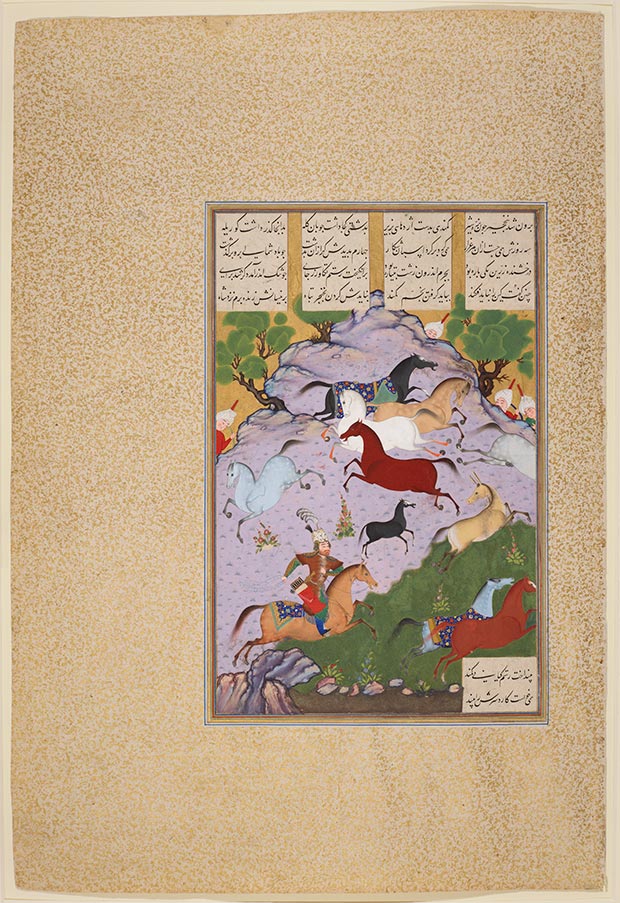 Rostam Pursues Akvan the Onager-Div Folio 294r from a Shah-Nameh (Book of Kings), produced for Shah Tahmasp I, Attributed to Mozaffar ‘Ali, Tabriz, Iran, 1530–35, Opaque watercolour, ink, and gold on paper, 47 x 31.8 cm, AKM162 / Courtesy of Aga Khan Museum
Rostam Pursues Akvan the Onager-Div Folio 294r from a Shah-Nameh (Book of Kings), produced for Shah Tahmasp I, Attributed to Mozaffar ‘Ali, Tabriz, Iran, 1530–35, Opaque watercolour, ink, and gold on paper, 47 x 31.8 cm, AKM162 / Courtesy of Aga Khan Museum
 School Courtyard with Boys Reading and Writing (Detail), Folio 149v of the Akhlaq-e Nasiri (Ethics of Nasir) by Tusi (d. 1274), Northern India (Historic Hindustan), ca. 1590–95, Opaque watercolour, ink, and gold on paper, 23.9 x 14.2 cm, AKM288 / Courtesy of Aga Khan Museum
School Courtyard with Boys Reading and Writing (Detail), Folio 149v of the Akhlaq-e Nasiri (Ethics of Nasir) by Tusi (d. 1274), Northern India (Historic Hindustan), ca. 1590–95, Opaque watercolour, ink, and gold on paper, 23.9 x 14.2 cm, AKM288 / Courtesy of Aga Khan Museum
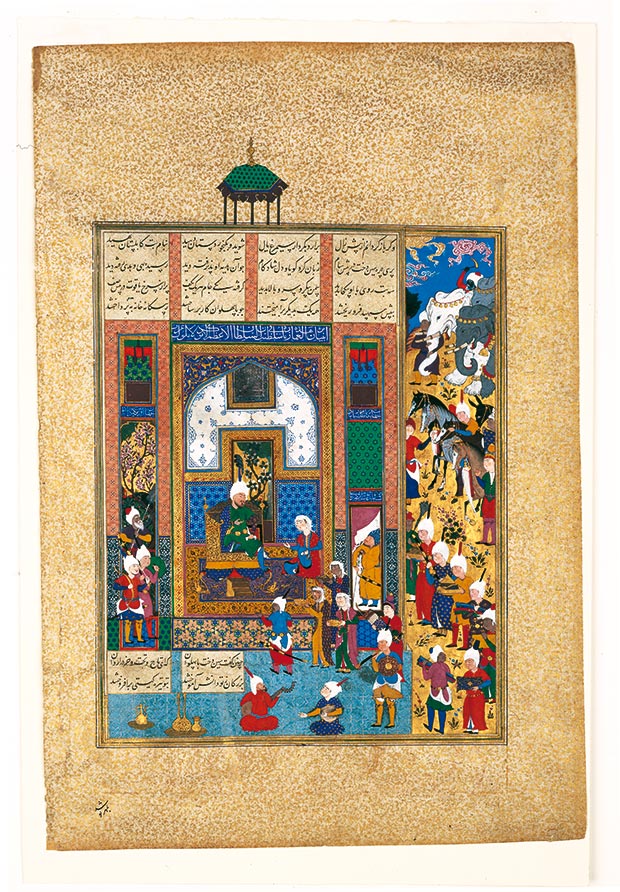 Sindukht Brings Gifts to the Court of Sam, Folio 84v from a Shah-Nameh (Book of Kings) produced for Shah Tahmasp I, Tabriz, Iran, 1522–35, Opaque watercolour, ink, and gold on paper, 46.5 x 31.2 cm, AKM496 / Courtesy of Aga Khan Museum
Sindukht Brings Gifts to the Court of Sam, Folio 84v from a Shah-Nameh (Book of Kings) produced for Shah Tahmasp I, Tabriz, Iran, 1522–35, Opaque watercolour, ink, and gold on paper, 46.5 x 31.2 cm, AKM496 / Courtesy of Aga Khan Museum
_18th-century_Aga-Khan-Museum.jpg) Shell with Inscriptions, India (Historic Hindustan), 18th century, Incised mother-of-pearl, Diameter 14.5 cm, AKM665 / Courtesy of Aga Khan Museum
Shell with Inscriptions, India (Historic Hindustan), 18th century, Incised mother-of-pearl, Diameter 14.5 cm, AKM665 / Courtesy of Aga Khan Museum
More information about the Aga Khan Museum, its upcoming exhibitions and programming.
Comments
Add a comment